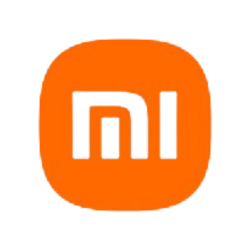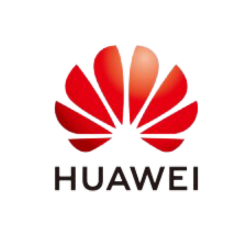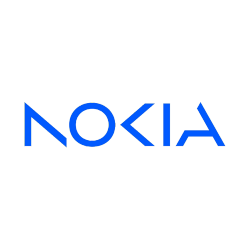
Overview
The Orange Barcelona smartphone, launched in Q2 of 2011, represents a fascinating chapter in the history of mobile technology. Released during the early stages of Android's dominance in the mobile OS market, the device packed the Android 2.2 (Froyo) operating system and offered a physical QWERTY keyboard, making it an intriguing choice for users still accustomed to tactile feedback in an era becoming increasingly dominated by touch-based interfaces.
Design and Build
The Orange Barcelona features a compact, ergonomic design with dimensions of 115 x 63 x 9.9 mm and a weight of 115 g. It fits comfortably in hand and pocket alike. The device incorporates a Mini-SIM format and carries a robust physical QWERTY keyboard, which is especially noteworthy as physical keyboards were starting to become a rarity among smartphones at the time. This feature undoubtedly appealed to users who were heavy on text inputs.
Display
The handset is equipped with a 2.6-inch TFT display capable of showing up to 256K colors. Although the screen-size-to-body ratio is approximately 28.9%, it serves well for basic tasks such as texting, calling, and light application usage. The 240 x 320 pixel resolution ensures readable text and adequate image clarity for the essential functions of a smartphone at the time.
Performance and Software
Under the hood, the Orange Barcelona is powered by the Android 2.2 (Froyo) operating system. While not the most advanced OS by today's standards, at the time, Froyo was praised for its speed improvements and increased memory support. The presence of a microSDHC card slot allowed users to expand storage, which compensated for the otherwise limited internal storage capacity. Although specific RAM and processor details are not explicitly mentioned, the device handled everyday tasks effortlessly, albeit with limitations on multitasking and heavy applications.
Network and Connectivity
The Orange Barcelona supports GSM and HSPA technology, making it suitable for 2G and 3G networks. The device remains competent in basic communication roles, supporting GSM bands 900, 1800, and 1900, along with HSDPA bands 900 and 2100 for 3G. Connectivity options include Wi-Fi 802.11 b/g, Bluetooth 2.1 with A2DP, and GPS with A-GPS functionality, providing a broad range of connectivity choices for its users. The addition of a microUSB 2.0 port allowed for easy charging and data transfer.
Camera
The smartphone features a single 3.15 MP main camera with autofocus capabilities. While it cannot compete with modern smartphone cameras in terms of resolution and quality, it was an acceptable offering for casual photography and video capture at the time. The absence of a dedicated selfie camera aligns with the era's trends, where front-facing cameras hadn't become standard yet.
Audio and Multimedia
The Orange Barcelona provides adequate multimedia capabilities with a built-in loudspeaker and a 3.5mm headphone jack, letting users enjoy audio media through speakers or external headphones. The inclusion of a stereo FM radio with RDS is a noteworthy feature, offering users entertainment options beyond stored media content.
Battery Life
One of the key considerations in mobile technology, the battery life of the Orange Barcelona is respectable, with a removable Li-Ion battery offering up to 288 hours of standby time and up to 7 hours of talk time. The removable battery design is particularly advantageous, as it enables users to swap batteries when needed, an option not always available in modern smartphones.
Sensors and Additional Features
In terms of sensors, the device includes an accelerometer, which was standard for detecting device orientation and facilitating a range of input motions. Despite the limited sensor suite by today's standards, it was sufficient for the device's intended functionality.
Conclusion
The Orange Barcelona is emblematic of a transitional phase in mobile technology, offering a blend of touch and type inputs, basic multimedia support, and satisfactory connectivity options. Although it may seem modest today, the device was a practical and reliable choice for users at the time of its release. Its enduring charm lies in its straightforward design and the nostalgia it evokes from an era when smartphones were just beginning to evolve into the multifaceted devices we rely on today.
Main Features of Orange Barcelona
- Supports GSM and HSPA network technologies for connectivity.
- Equipped with a QWERTY keyboard for easier typing.
- Runs on Android 2.2 (Froyo) operating system.
- Compact and lightweight design, weighing only 115 g.
- Includes a 3.15 MP autofocus main camera with video recording capability.
- Features a 2.6-inch TFT display with 256K colors.
- Offers Wi-Fi and Bluetooth 2.1 with A2DP for wireless connectivity.
- Comes with GPS and A-GPS for navigation support.
- Incorporates a stereo FM radio with RDS functionality.
- Expandable storage through a microSDHC card slot.
- Equipped with a removable Li-Ion battery offering up to 7 hours of talk time.
- Includes standard 3.5mm audio jack.
Drawbacks of Orange Barcelona
- Older Android Version: The device runs on Android 2.2 (Froyo), which is outdated and lacks support for modern apps and features.
- Limited Display Quality: The 2.6-inch display with a resolution of 240 x 320 pixels offers a low screen-to-body ratio and lower color depth with only 256K colors.
- Discontinued Model: The device is discontinued which means no further updates or support from the manufacturer.
- Limited Selfie Camera: No front-facing camera for selfies, which is a significant downside for users who value video calls or selfies.
- Basic Processor Capabilities: Lack of detailed processor information suggests limited processing power, affecting the performance, especially for multitasking and running modern applications.
- Limited Internal Memory: Requires reliance on a microSDHC card for additional storage, which may be inconvenient for some users.
- Basic Connectivity Features: Bluetooth version 2.1 is quite outdated, which may impact the speed and quality of wireless audio transmission.
- Lacks Modern Sensors: Only includes an accelerometer, missing more advanced sensors found in newer smartphones.
- Bulky and Heavy Design: With dimensions of 115 x 63 x 9.9 mm and weighing 115 g, it may not be as sleek or lightweight as more recent models.

View Also
More Phones
All Rights Reserved +13637 Phones © Mobilawy 2025
























